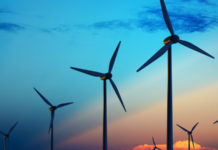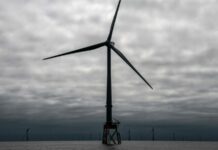
[miningmx.com] — INDIA’s need to import up to 200mt/year of low-grade thermal coal offered a huge opportunity to develop Botswana’s untapped coal resources, according to Aviva CEO Lindsay Reed.
Aviva controls the Mmamantswe coal project in eastern Botswana where the group had initially planned to develop a 1,000MW power station which would supply electricity to Eskom as an independent power producer (IPP).
The group dropped those plans last year after publication of South Africa’s Integrated Resource Plan 2010 (IRP) which set out the blueprint on how the country would source its power requirements through to 2030.
The IRP downplayed the role of both coal-fired power stations and IPPs. It proposed to generate the bulk of the additional power required from renewable sources such as wind and solar as well as through the construction of six, new nuclear power stations.
Interviewed on the sidelines of the Africa Down Under conference, being held in Perth, Western Australia, Reed said the next critical stage was for Botswana to demonstrate it had sufficient export production to underwrite a “transport corridor’ to take 50mt/year of coal to an export port.
There were two potential routes: the Trans-Kalahari line across Botswana and Namibia to either Luderitz or Walvis Bay or the line proposed to pass through southern Zimbabwe and Mozambique to link to a new deep-water port to be built near Maputo at Technobanine point in the district of Matutuine.
Reed said export production of some 50mt/year would be required to justify construction of the line. He expected half of that to come from Botswana and the other half to be sourced from the adjacent Waterberg coal field in South Africa.
Said Reed: “Each route has its pros and cons. Four years ago, my attitude was “don’t even think about such a railway line. Just forget about it’.
“But I now believe there will be Indian involvement in the construction of such a line because I don’t see how they are going to meet their coal import requirements without it.
“The capital cost of the line is not that great when compared against the capital cost of the power stations to be built in India that will burn the coal.’
Reed said the strategy of the Indians to buy lower calorific value export coal of just over 5,000kcals (kilocalories) – compared with the usual specification of more than 6,000kcals – had changed everything.
“The deposits on the Waterberg and in eastern Botswana are capable of producing such a coal although it is very important that there be a balance between this product and a lower quality middlings product which will burnt by domestic power stations.’
Reed believed the potential now existed for the construction of small IPP coal-fired stations of about 300MW capacity using fluidized bed technology to be built in Botswana and other southern African countries.
He said such developments would be healthy as they would diversify the region’s power generation base and reduce the dependence of South Africa’s neighbours on Eskom for their electricity supplies.
He also believed Eskom would inevitably have to buy power from IPPs in countries like Botswana because he believed the IRP plan was not going to work.
“Renewable energy is expensive energy. Some of the states in Australia are putting a cap on their renewable energy plans because of this fact.
“Nuclear plants are also extremely expensive to build and require very long development timelines.’
Reed said he had been positive about the future of the coal sector in South Africa until the publication of the IRP.
“There are also now these noises coming out of South Africa about holding back on coal export volumes,” said Reed.
“I think that’s exactly the opposite of what the country should be doing. The more export coal you produce and sell the more middlings coal you will produce that can be burnt by the power stations.’











